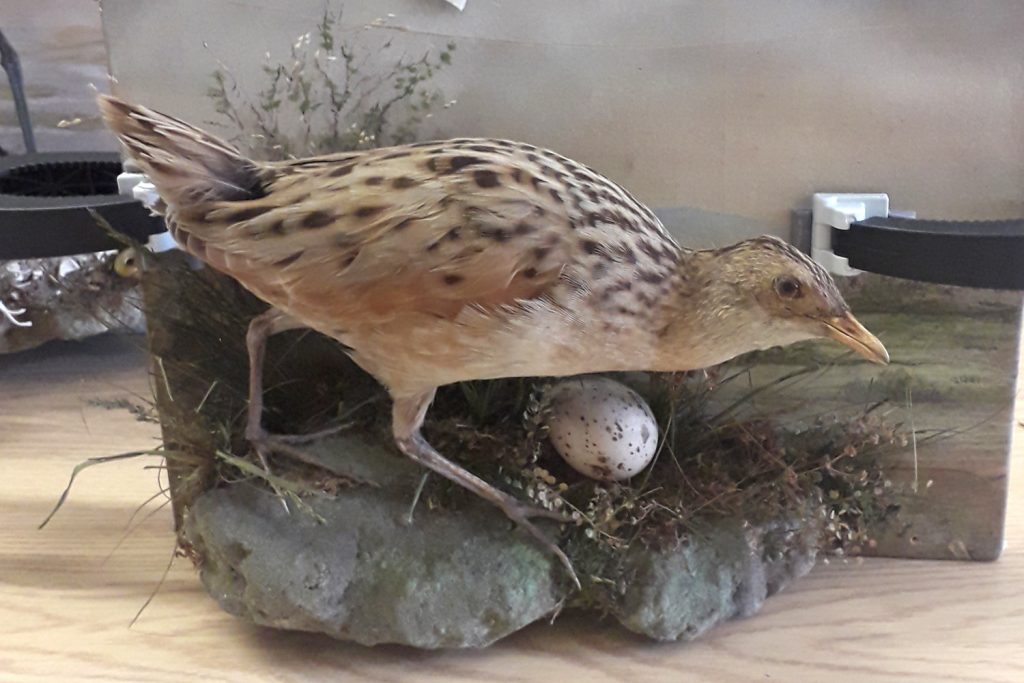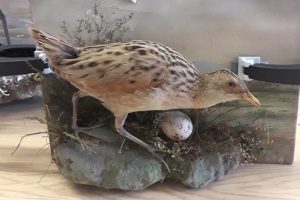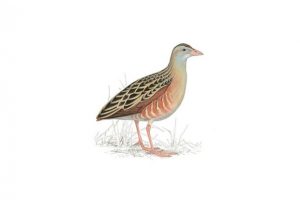If your family are taking part the Big Schools Birdwatch, or if you are a keen twitcher, keep a lookout on our Facebook page over the next few weeks. We will be sharing a selection of birds from our natural history collection for you to identify.
- Corncrake before conservation
- Corncrake during Conservation
- RSPB Corncrake illustration
You can see the fully conserved Corncrake on the second floor outside the museum.
This corncrake was found in a garden on Hesketh Road, Southport by Alfed Bazeley in 1919. It was taxidermied by W.R.Hine who had premises at 613 and 615 Lord Street. Hine was the principal taxidermist in the North West and his work is now highly prized. Listen to Alfred Baszley’s grandson John Siddall explain what caused the bird to be in the garden and how it came into The Atkinson’s collection.
The Corncrake, sometimes called a Landrail is a relative of the Coot and Moorhen, though is a little smaller and lives on dry land. Like many of the rails it is shy, skulking in dense grasslands, pastures and hey fields, it is more often heard than seen. The rasping voice of the corncrake sounds like a piece of wood being drawn against the teeth of a comb. This is thought to be how it got its Latin name of Crex Crex.
Corncrake’s eat insects such as grasshoppers, earwigs, worms, even slugs and snails as well as some seeds. They make their nests on the ground, hidden in vegetation, out of dry leaves and grass and lay 8 -12 eggs at a time. Once hatched both parents feed the chicks for a few days. After this the chicks can leave the nest on foot and forage for themselves too. After about 5 weeks they learn to fly and leave the nest for good.
The population of Corncrakes in Britain had been declining since the beginning of the 20th century thought to have been caused by destruction of habitat due to modernisations in agriculture. The lowest point for corncrake population in Britain was during the 1990s but since then numbers have slowly been increasing thanks to conservation efforts.
For even more about the corncrake visit the RSPB page about them here: www.rspb.org.uk/birds-an-wildlife/wildlife-guides/bird-a-z/corncrake/
References:
• Peter Holden, Collins Wild Guide Birds of Britain and Ireland, 1996, HarperCollinspublishers, page 89
• Readers Digest, Book of British Birds, 1969, Drive Publications Limited, page 73
Written by Jenny Cope, Museum Futures Trainee
Posted on 6 February 2021 under General news, Museum










